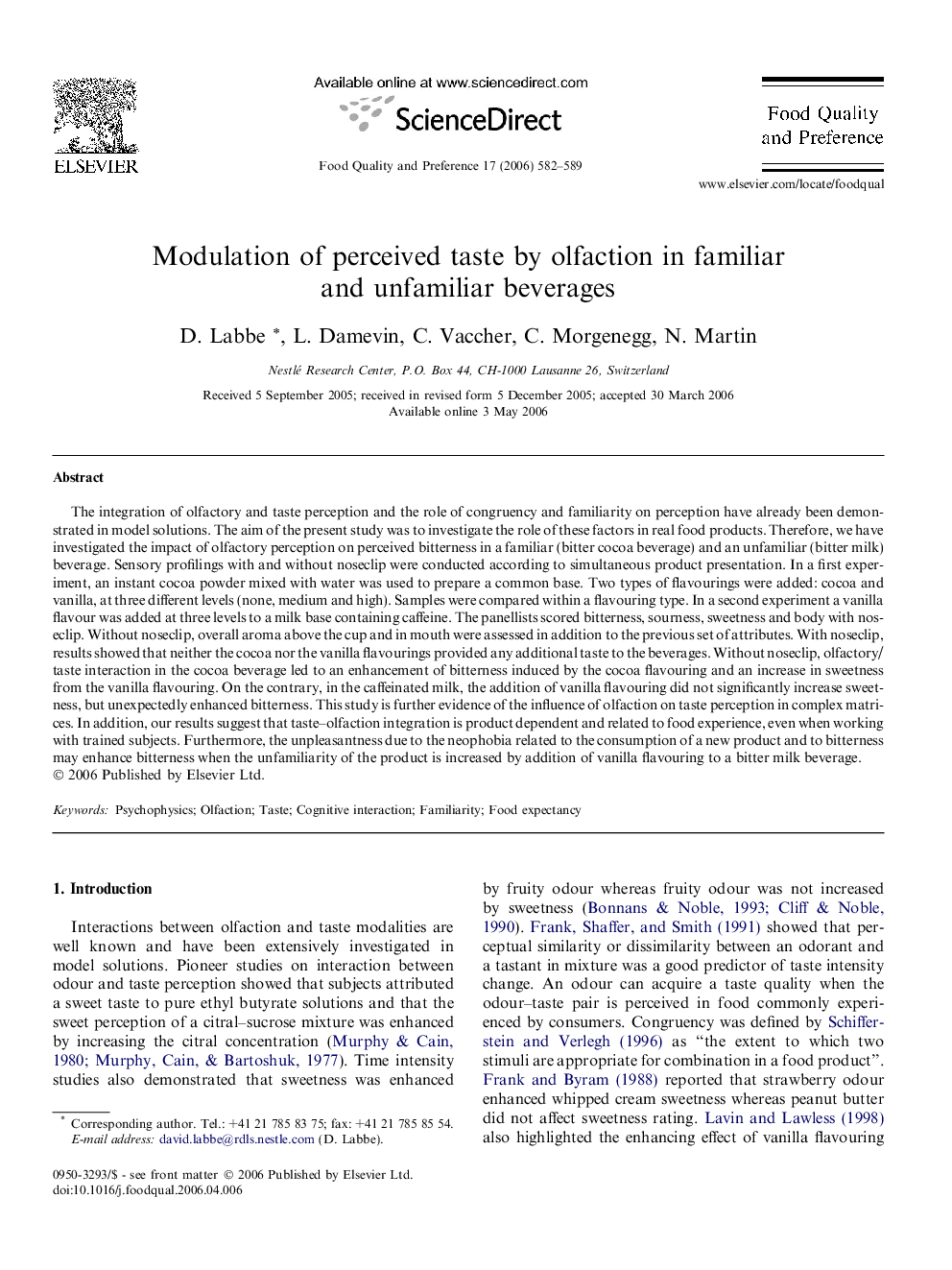| کد مقاله | کد نشریه | سال انتشار | مقاله انگلیسی | نسخه تمام متن |
|---|---|---|---|---|
| 4318211 | 1613168 | 2006 | 8 صفحه PDF | دانلود رایگان |

The integration of olfactory and taste perception and the role of congruency and familiarity on perception have already been demonstrated in model solutions. The aim of the present study was to investigate the role of these factors in real food products. Therefore, we have investigated the impact of olfactory perception on perceived bitterness in a familiar (bitter cocoa beverage) and an unfamiliar (bitter milk) beverage. Sensory profilings with and without noseclip were conducted according to simultaneous product presentation. In a first experiment, an instant cocoa powder mixed with water was used to prepare a common base. Two types of flavourings were added: cocoa and vanilla, at three different levels (none, medium and high). Samples were compared within a flavouring type. In a second experiment a vanilla flavour was added at three levels to a milk base containing caffeine. The panellists scored bitterness, sourness, sweetness and body with noseclip. Without noseclip, overall aroma above the cup and in mouth were assessed in addition to the previous set of attributes. With noseclip, results showed that neither the cocoa nor the vanilla flavourings provided any additional taste to the beverages. Without noseclip, olfactory/taste interaction in the cocoa beverage led to an enhancement of bitterness induced by the cocoa flavouring and an increase in sweetness from the vanilla flavouring. On the contrary, in the caffeinated milk, the addition of vanilla flavouring did not significantly increase sweetness, but unexpectedly enhanced bitterness. This study is further evidence of the influence of olfaction on taste perception in complex matrices. In addition, our results suggest that taste–olfaction integration is product dependent and related to food experience, even when working with trained subjects. Furthermore, the unpleasantness due to the neophobia related to the consumption of a new product and to bitterness may enhance bitterness when the unfamiliarity of the product is increased by addition of vanilla flavouring to a bitter milk beverage.
Journal: Food Quality and Preference - Volume 17, Issues 7–8, October–December 2006, Pages 582–589